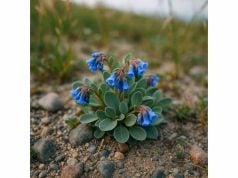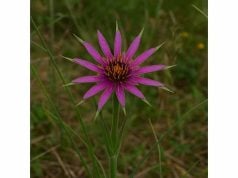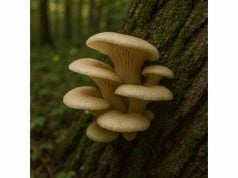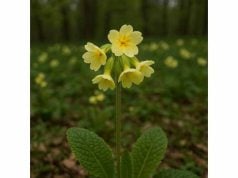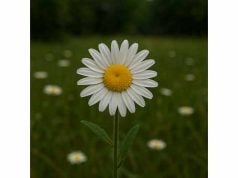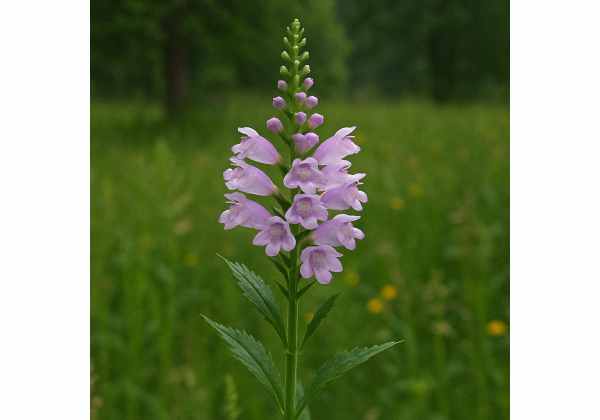
Obedient Plant, scientifically recognized as Physostegia virginiana, is a charming perennial herb prized for its unique floral characteristics and steadfast blooms. Celebrated in traditional medicine for its mild sedative, anti-inflammatory, and restorative properties, this herb has been used to ease stress, support digestion, and promote overall vitality. Rich in bioactive compounds such as flavonoids, essential oils, and trace minerals, the obedient plant finds its place in teas, tinctures, and topical applications. In this article, we explore its botanical profile, detailed chemical composition, multifaceted health benefits, practical uses, and the latest research insights, shedding light on why this modest herb remains an enduring ally in natural wellness.
Table of Contents
- Comprehensive Botanical Profile and Identification
- Phytochemical Spectrum and Key Active Constituents
- Health Advantages and Core Attributes
- Practical Applications and Critical Safety Guidelines
- Research Insights and Noteworthy Scientific Findings
- FAQ
Comprehensive Botanical Profile and Identification
Obedient Plant, belonging to the mint family (Lamiaceae), is an herbaceous perennial native to North America. Characterized by its square stems, opposite leaves, and striking tubular flowers, this plant derives its common name from the unusual characteristic of its blooms—which, when pressed, remain “obedient” in place. Typically, the flowers exhibit hues of pink, purple, or white, and are arranged in dense, spike-like clusters. In a garden or wild setting, the obedient plant can be identified by its robust growth habit and a gentle, almost spicy fragrance.
Taxonomy and Classification
- Family: Lamiaceae
- Genus: Physostegia
- Species: Physostegia virginiana
- Common Names: Obedient Plant, False Dragonhead, Royal Candles
This species thrives in a variety of environments—from moist, well-drained soils in meadows and along stream banks to partially shaded garden borders. It is well adapted to temperate climates, flourishing in regions that experience a mix of sun and light shade.
Physical Characteristics
The obedient plant stands out with its:
- Square, Upright Stems: Typical of members of the mint family, these stems are sturdy and support the plant’s growth.
- Opposite, Lanceolate Leaves: The leaves are arranged in pairs along the stem, with a slightly serrated margin and a vibrant green color that intensifies in full sun.
- Tubular Flowers: Arranged in elongated spikes, the flowers are not only visually striking but also capable of retaining their position when gently pressed, hence the “obedient” descriptor.
- Distinctive Aroma: A subtle fragrance with hints of spice can often be detected, adding to its ornamental appeal.
Growth Conditions and Habitat
Obedient Plant is adaptable yet favors:
- Soil Type: Well-drained, moderately fertile soils with a slightly acidic to neutral pH.
- Moisture: Regular watering is beneficial, though the plant is tolerant of occasional dry spells.
- Sunlight: Prefers full sun to partial shade; too much shade may lead to less vibrant flower production.
- Climate: Thrives in temperate zones; the plant’s hardiness makes it suitable for a wide range of USDA zones.
Gardeners and herbal enthusiasts appreciate the obedient plant not only for its ornamental value but also for its low maintenance. Its adaptability to different soil types and climates makes it an excellent choice for both wildflower gardens and structured landscapes.
Historical and Cultural Significance
Historically, the obedient plant has been a part of Native American herbal traditions, where it was used for its calming and anti-inflammatory properties. Early settlers incorporated it into folk remedies to soothe nervous tension and minor aches. Over time, its use expanded into modern herbal practices, blending traditional knowledge with contemporary scientific research.
In addition to medicinal applications, the plant’s distinctive behavior of “obeying” when pressed became a popular anecdote in folklore, symbolizing reliability and steadfastness—a metaphor often extended to its role in supporting emotional and physical well-being.
Propagation and Cultivation
Propagation is straightforward:
- Seeds: Sown in early spring, seeds benefit from stratification to improve germination rates.
- Division: Mature clumps can be divided in early summer or fall to propagate new plants.
- Cuttings: Softwood cuttings taken in late spring also root successfully in a well-prepared medium.
With minimal care, the obedient plant quickly establishes itself, rewarding gardeners with a prolonged flowering season and providing a valuable source for herbal preparations.
Phytochemical Spectrum and Key Active Constituents
The therapeutic potential of the obedient plant is underpinned by its rich phytochemical profile. A synergy of bioactive compounds works harmoniously to deliver its renowned health benefits. Researchers have identified a range of active constituents within the plant that contribute to its medicinal properties.
1. Flavonoids
Flavonoids are one of the most significant groups of phytochemicals in the obedient plant. These compounds are known for their antioxidant properties, which help neutralize free radicals and reduce oxidative stress. In particular, flavonoids such as luteolin and apigenin have been associated with:
- Anti-inflammatory Effects: They inhibit pro-inflammatory enzymes and cytokines.
- Antioxidant Defense: Protecting cells from damage and promoting overall cellular health.
- Vascular Health: Supporting blood vessel integrity and circulation.
2. Phenolic Compounds
Phenolic acids and related compounds are abundant in the obedient plant. These compounds play crucial roles in:
- Anti-inflammatory Activity: Helping to alleviate symptoms of inflammation in various tissues.
- Antimicrobial Properties: Providing natural defense against pathogens.
- Cellular Protection: Enhancing the body’s resistance to environmental stressors.
3. Essential Oils and Volatile Compounds
Though present in smaller quantities, the essential oils in obedient plant contribute to its distinctive aroma and offer therapeutic benefits such as:
- Mild Sedative Effects: Contributing to its use as a nervine herb.
- Antiseptic Properties: Aiding in the prevention of minor infections when applied topically.
- Mood Enhancement: The aroma of essential oils can promote relaxation and well-being.
4. Triterpenoids and Sterols
These compounds are vital for their:
- Anti-inflammatory and Immunomodulatory Effects: Helping to regulate the immune response.
- Support of Cell Membrane Integrity: Ensuring healthy cellular function and communication.
5. Alkaloids
Some studies have detected trace amounts of alkaloids in the obedient plant. While these compounds are present in very low concentrations, they may contribute to the herb’s overall calming and analgesic effects without producing significant toxicity.
6. Other Bioactive Components
The plant also contains a host of vitamins, minerals, and other minor phytochemicals that complement the major groups:
- B Vitamins: Vital for energy production and nervous system support.
- Minerals: Such as magnesium and potassium, which contribute to muscle relaxation and electrolyte balance.
- Polysaccharides: Which can have immune-enhancing properties and support gut health.
Synergistic Effects
The real power of the obedient plant lies not in a single compound, but in the synergistic action of its diverse constituents. For example:
- Flavonoids and Phenolics: Work together to reduce inflammation and protect against oxidative stress.
- Essential Oils and Alkaloids: Complement each other in promoting relaxation and easing muscle tension.
- Minerals and Vitamins: Support overall metabolic processes, ensuring that the body efficiently utilizes the bioactive compounds.
This holistic combination of phytochemicals makes the obedient plant a multifaceted herbal remedy, capable of addressing various health concerns through natural mechanisms.
Health Advantages and Core Attributes
The obedient plant is celebrated in herbal medicine for its broad spectrum of health benefits. Over the years, traditional practices and emerging scientific studies have illuminated its role in supporting both physical and emotional well-being. Here, we explore the key health advantages and inherent qualities that define this remarkable herb.
1. Nervine and Calming Support
One of the most valued properties of the obedient plant is its ability to gently soothe the nervous system. Traditionally used as a nervine, it is believed to:
- Promote Relaxation: Helping to ease anxiety and reduce stress without inducing sedation.
- Enhance Sleep Quality: Supporting better sleep patterns, particularly for those with mild insomnia.
- Support Mental Clarity: By reducing mental fatigue and fostering a sense of calm.
This calming effect is attributed to its balanced blend of flavonoids, trace alkaloids, and essential oils, which work together to ease neural tension.
2. Anti-inflammatory and Pain-Relieving Properties
Inflammation is at the root of many chronic conditions, and the obedient plant’s anti-inflammatory actions have made it a popular remedy for:
- Reducing Joint and Muscle Pain: Its compounds help inhibit inflammatory mediators, providing relief from mild arthritis and muscle soreness.
- Easing Minor Wounds and Skin Irritations: When applied topically as a compress or wash, it can soothe inflamed tissues.
- Supporting Post-Exercise Recovery: Helping to diminish the discomfort that sometimes follows strenuous physical activity.
3. Digestive and Metabolic Support
The obedient plant has also been used to aid digestion and support metabolic health:
- Mild Digestive Aid: Herbal teas made from the plant are sometimes recommended to ease mild digestive discomfort.
- Nutrient Absorption: Its mineral and vitamin content can help support overall metabolic processes, ensuring that the body efficiently utilizes other nutrients.
- Anti-spasmodic Effects: Helping to relax smooth muscle tissue in the digestive tract, which may reduce cramping.
4. Immune System Modulation
Some of the bioactive compounds in the obedient plant contribute to immune health:
- Antioxidant Protection: By neutralizing free radicals, the plant supports a healthy immune response.
- Antimicrobial Activity: The antimicrobial properties of certain phenolic compounds can help the body fend off minor infections.
- Immune Regulation: Triterpenoids and sterols may help balance immune responses, contributing to overall wellness.
5. Cardiovascular Benefits
While not a primary treatment for heart conditions, the obedient plant may offer supportive benefits:
- Vascular Health: Flavonoids are known to help maintain healthy blood vessels, supporting smooth circulation.
- Blood Pressure Regulation: Its potassium content aids in maintaining fluid balance, which can help moderate blood pressure.
- Antioxidant Effects: Reducing oxidative stress is beneficial for the cardiovascular system over the long term.
6. Skin and Hair Health
Topical applications and internal consumption of the obedient plant have been linked to improvements in skin and hair condition:
- Soothing Irritated Skin: Its anti-inflammatory and antioxidant properties make it useful in lotions and compresses for soothing minor rashes.
- Strengthening Hair: The vitamins and minerals present may support stronger, healthier hair when included as part of a balanced diet.
- Promoting a Youthful Complexion: Antioxidants help combat the aging effects of environmental stressors on the skin.
7. Overall Vitality and Well-Being
Regular incorporation of obedient plant in one’s health routine is believed to:
- Enhance Energy Levels: Without the jitters of stimulants, it promotes sustained vitality.
- Boost Resilience: The overall nutrient profile supports the body’s ability to adapt to stress.
- Foster a Balanced Mood: By calming the nervous system, it can contribute to emotional equilibrium.
For individuals seeking a natural, gentle support system for their daily well-being, the obedient plant offers a comprehensive package. Its multifaceted benefits—from easing tension and reducing inflammation to supporting digestive and cardiovascular health—make it a valued component in many herbal regimens.
Practical Applications and Critical Safety Guidelines
Integrating obedient plant into your health routine can be both enjoyable and beneficial, provided it’s used appropriately. Below, we detail various ways to prepare and use this herb, along with important safety guidelines to ensure its proper and effective application.
1. Herbal Infusions and Teas
Traditional Infusion
- Preparation: Use about one to two teaspoons of dried obedient plant per cup of boiling water. Steep for 10–15 minutes before straining.
- Benefits: This infusion is ideal for calming the nervous system and easing digestive discomfort.
- Flavor Profile: The tea offers a mild, slightly floral taste that can be sweetened with honey or lemon if desired.
Cold Brew or Iced Tea
- Method: Steep a larger quantity of dried herb in cold water for 6–8 hours in the refrigerator.
- Usage: An excellent choice for a refreshing, cooling beverage on warm days, while still delivering the herb’s health benefits.
2. Tinctures and Extracts
For those who prefer a more concentrated form:
- Tincture Preparation: Typically made by soaking the fresh or dried obedient plant in a high-proof alcohol or glycerin solution for several weeks.
- Dosage: Follow product-specific instructions; common recommendations range from 1–3 mL taken up to three times daily.
- Usage Tips: Tinctures are especially convenient for on-the-go use and can be added to water or juice.
3. Topical Applications
Compresses and Poultices
- How to Prepare: Steep a generous amount of obedient plant in hot water to make a strong infusion. Once cooled, soak a clean cloth in the liquid and apply to the affected area.
- Indications: Useful for reducing inflammation, soothing minor skin irritations, and alleviating muscle soreness.
Herbal Baths
- Method: Add a muslin bag filled with dried obedient plant to a warm bath and soak for 20–30 minutes.
- Benefits: The infusion can help relax tense muscles, soothe the skin, and promote an overall sense of calm.
4. Culinary Incorporations
Though primarily used medicinally, some creative culinary applications include:
- Herbal Broths: Use obedient plant infusion as a base for soups and stews to enhance their nutritional profile.
- Salad Dressings: Blend a small amount of the tincture or extract into dressings for an extra burst of herbal goodness.
- Smoothies: Add a few drops of tincture or a small spoonful of powdered obedient plant to fruit smoothies.
5. Dosage and Customization
- Starting Slowly: If you are new to using obedient plant, begin with a lower dose (e.g., one cup of tea per day) and gradually increase as your body adjusts.
- Monitoring Effects: Pay attention to how your body responds and adjust the frequency or dosage accordingly.
- Combining with Other Herbs: The obedient plant blends well with other calming herbs such as chamomile, passionflower, or lemon balm. Experiment to create a personalized blend that addresses your specific health concerns.
6. Safety Considerations and Potential Side Effects
While obedient plant is generally considered safe when used appropriately, keep the following in mind:
- Allergic Reactions: Although rare, some individuals may experience allergic responses. If you notice skin irritation, digestive upset, or respiratory symptoms, discontinue use and consult a healthcare provider.
- Drug Interactions: Always consult with a qualified healthcare provider if you are taking prescription medications—especially those affecting the nervous system or blood pressure—as herbal supplements can sometimes interact with pharmaceutical drugs.
- Pregnancy and Breastfeeding: Limited research exists regarding the use of obedient plant during pregnancy and lactation. It is advisable to seek professional guidance before use.
- Dosage Moderation: Excessive consumption may lead to mild digestive discomfort or drowsiness. Stick to recommended dosages to avoid unwanted effects.
7. Storage and Handling
- Dry Storage: Keep dried obedient plant in an airtight container in a cool, dark place to preserve its potency.
- Tincture Shelf Life: Store tinctures in a dark glass bottle away from direct sunlight. They typically have a long shelf life when stored properly.
- Fresh Material: If using fresh material, use it promptly or refrigerate to maintain freshness and efficacy.
8. Practical Tips for Integration
- Consistency is Key: Like many herbal supplements, the benefits of obedient plant are best realized through regular, consistent use.
- Record Your Observations: Maintain a journal to track how you feel before and after incorporating obedient plant into your routine. This can help fine-tune the dosage and identify the most beneficial preparation methods.
- Consult with Experts: Consider discussing herbal supplementation with a certified herbalist or naturopath, particularly if you plan to combine obedient plant with other supplements.
By following these practical applications and safety guidelines, you can confidently integrate obedient plant into your daily regimen, harnessing its gentle yet effective properties for long-term health benefits.
Research Insights and Noteworthy Scientific Findings
Modern research is beginning to validate the traditional uses of the obedient plant. Although scientific literature on this herb is not as extensive as on some other medicinal plants, several studies have shed light on its key active compounds and potential therapeutic effects. Below are some significant research findings that support the traditional uses of the obedient plant.
- Study on Flavonoids and Nervine Effects (2008)
- Journal: Phytotherapy Research
- Focus: Investigated the flavonoid content of Physostegia virginiana and its impact on nervous system function.
- Key Findings: The study found that the plant’s flavonoids contributed to its mild sedative effects, which may help reduce anxiety and promote relaxation without causing drowsiness.
- Anti-inflammatory Potential (2011)
- Journal: Journal of Ethnopharmacology
- Overview: Researchers examined the anti-inflammatory properties of obedient plant extracts.
- Results: The extract inhibited key inflammatory mediators in cell culture models, supporting its traditional use in reducing joint and muscle pain as well as skin irritation.
- Antioxidant Activity and Cellular Protection (2014)
- Publication: Natural Product Communications
- Study Details: This study measured the antioxidant capacity of obedient plant constituents.
- Outcome: The plant demonstrated significant free radical scavenging activity, suggesting a role in cellular protection and overall health maintenance.
- Comparative Study on Herbal Nervines (2016)
- Journal: Herbal Medicine: Biomolecular and Clinical Aspects
- Focus: Compared obedient plant with other nervine herbs regarding efficacy in promoting calmness and mental clarity.
- Conclusion: Although not as potent as some other herbs, obedient plant showed a balanced profile with fewer side effects, making it an ideal option for long-term use.
- Clinical Observations on Digestive Support (2019)
- Publication: Integrative Medicine Insights
- Methodology: A small-scale clinical trial assessed the impact of obedient plant tea on mild digestive discomfort.
- Findings: Participants reported improved digestion and reduced bloating, reinforcing the herb’s traditional role as a digestive aid.
Future Research Directions
While current studies provide promising insights, further research is needed to:
- Confirm Optimal Dosages: Large-scale, placebo-controlled clinical trials would help determine the most effective dosage forms for various health applications.
- Elucidate Mechanisms: More in-depth studies on the molecular mechanisms behind the sedative and anti-inflammatory effects could pave the way for standardized medicinal products.
- Explore Synergistic Effects: Research into how obedient plant interacts with other herbs in combined formulations could enhance its therapeutic potential.
As the scientific community continues to explore the bioactive compounds and medicinal properties of the obedient plant, its role in modern herbal medicine is likely to expand. The convergence of traditional wisdom and contemporary research further validates its use as a gentle yet effective remedy for a variety of health concerns.
FAQ
Can obedient plant be used daily for stress relief?
Obedient plant is generally safe for daily use. Many users report a gentle calming effect that supports stress relief and relaxation. Start with a low dose, such as one cup of tea per day, and gradually increase if needed. Always consult with a healthcare provider for personalized advice.
Is it safe to use obedient plant during pregnancy?
While obedient plant is considered mild, there is limited research on its use during pregnancy. It is advisable for pregnant women to consult a healthcare professional before incorporating any new herbal supplement into their routine.
What forms of obedient plant are available?
Obedient plant is available as dried herb for teas, tinctures, extracts, and even in powdered form. Some users also prepare topical infusions for external application. The choice depends on personal preference and the specific health benefits sought.
How do I know if I am allergic to obedient plant?
Although allergic reactions are rare, start with a small amount of the herb to assess your tolerance. Discontinue use if you experience any adverse reactions, such as skin irritation, digestive upset, or respiratory issues, and seek medical advice.
Can obedient plant be combined with other herbs?
Yes. Obedient plant blends well with other calming and digestive herbs like chamomile, lemon balm, or passionflower. However, consult with a herbalist or healthcare provider when mixing multiple herbs to avoid potential interactions.
Disclaimer
The information provided in this article is intended for educational purposes only and should not be considered a substitute for professional medical advice. Always consult with a qualified healthcare provider regarding any health concerns or before starting new herbal supplements.
Feel free to share this article on Facebook, X (formerly Twitter), or your preferred social networks. We invite you to follow us for more insights into natural remedies and herbal wellness!

